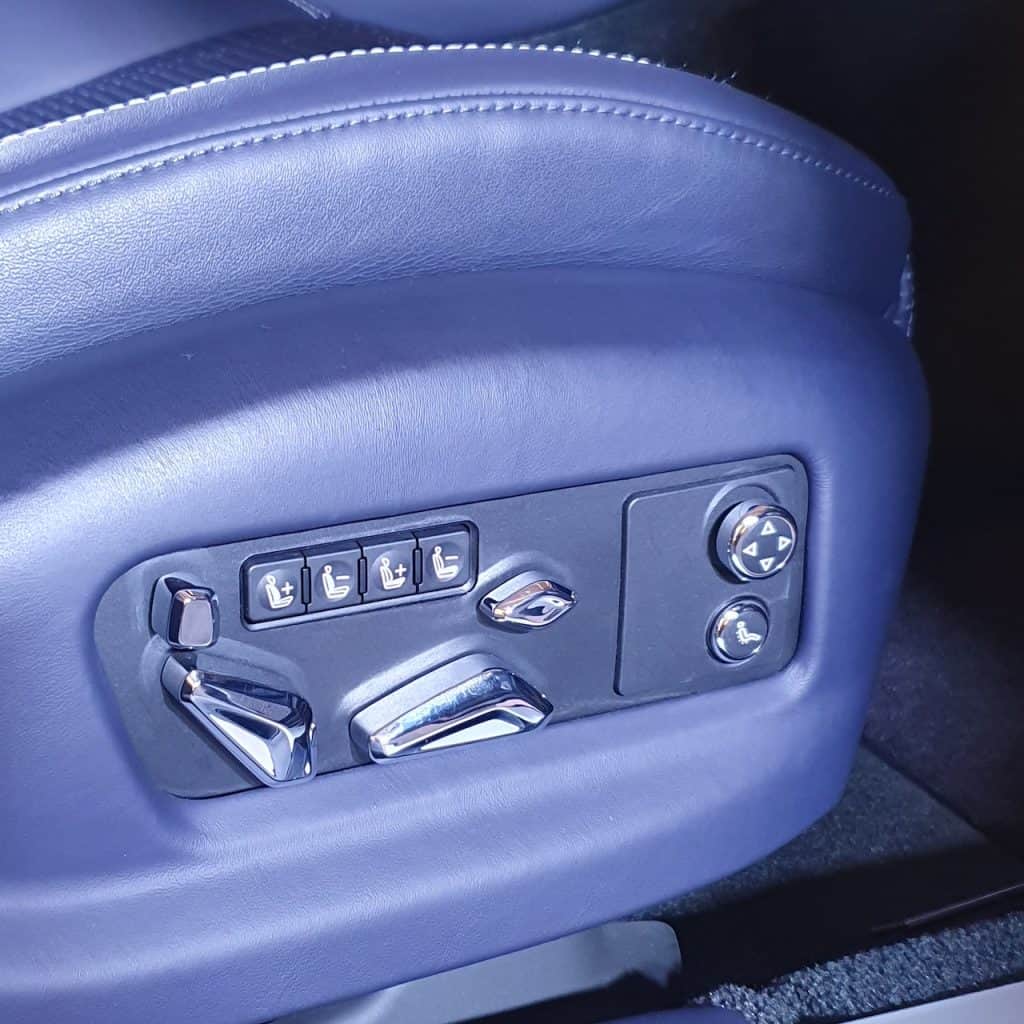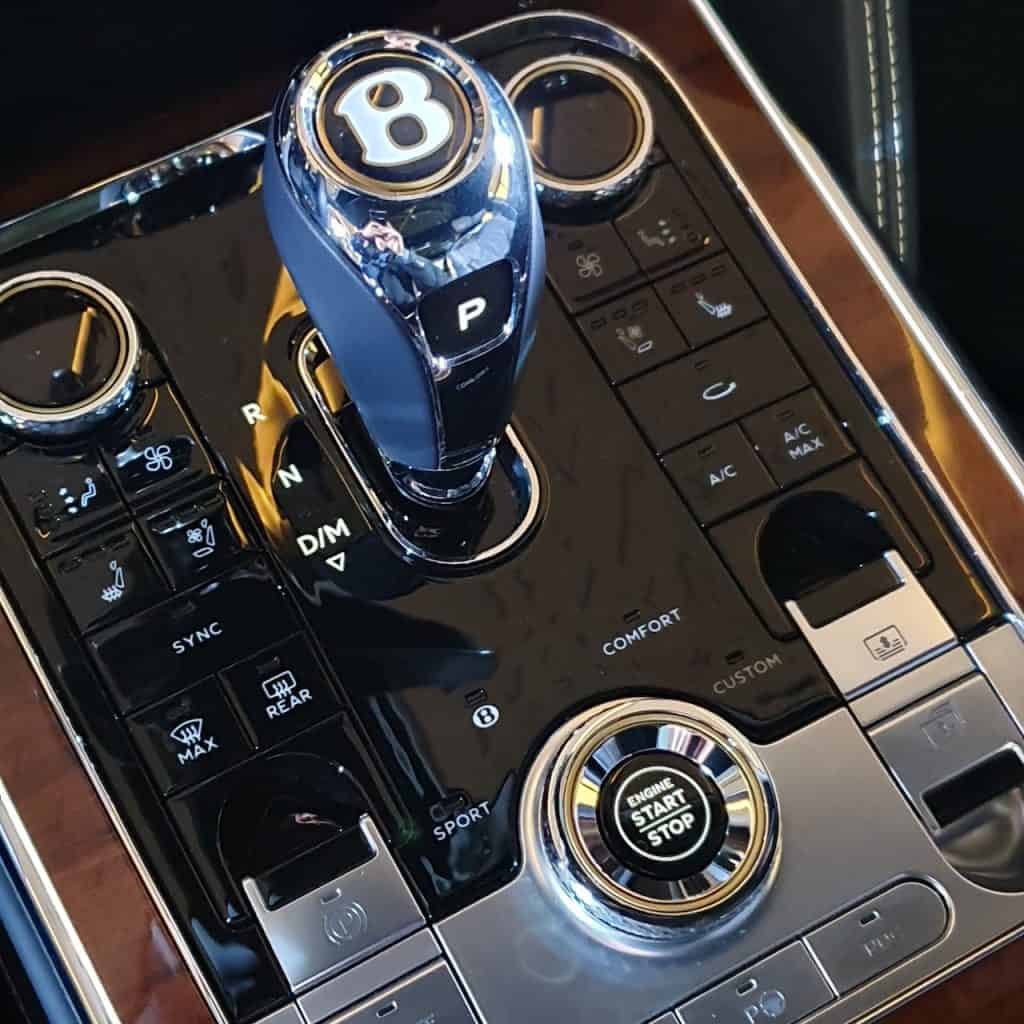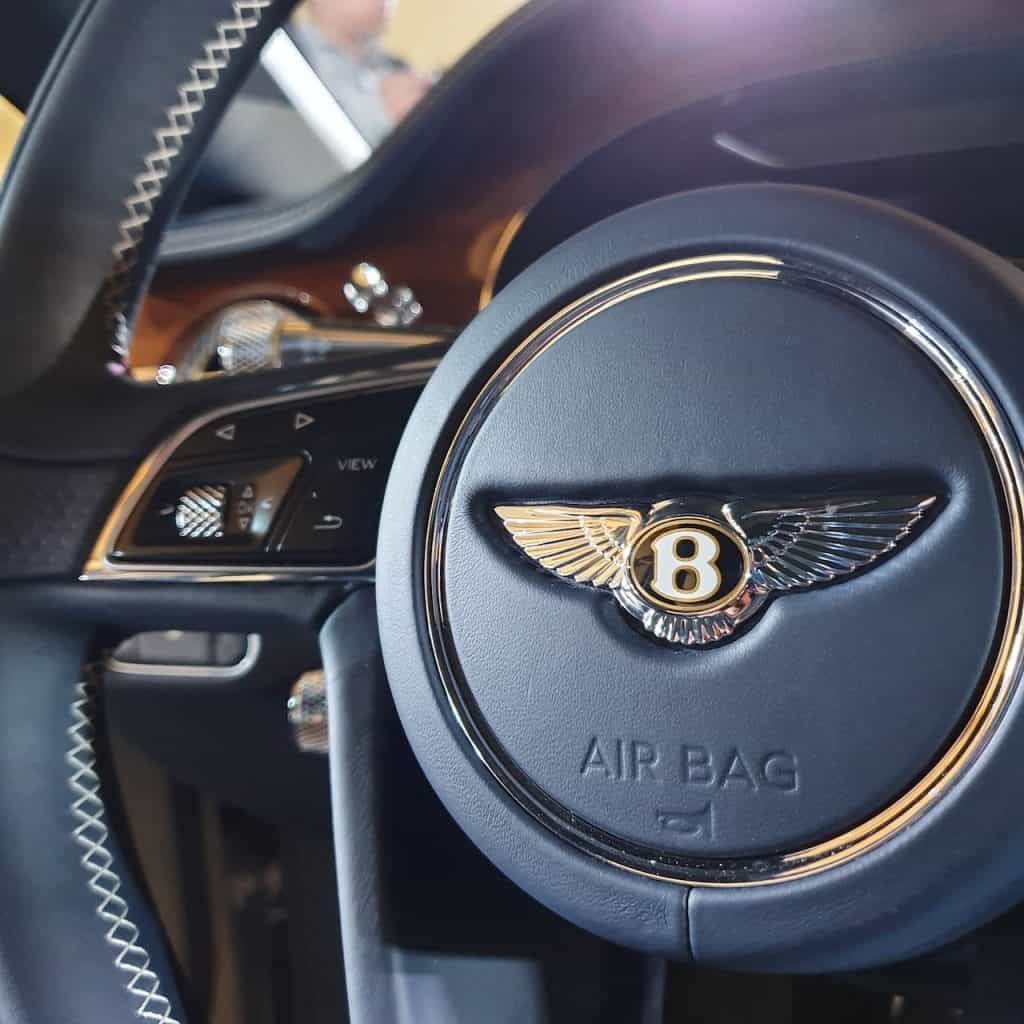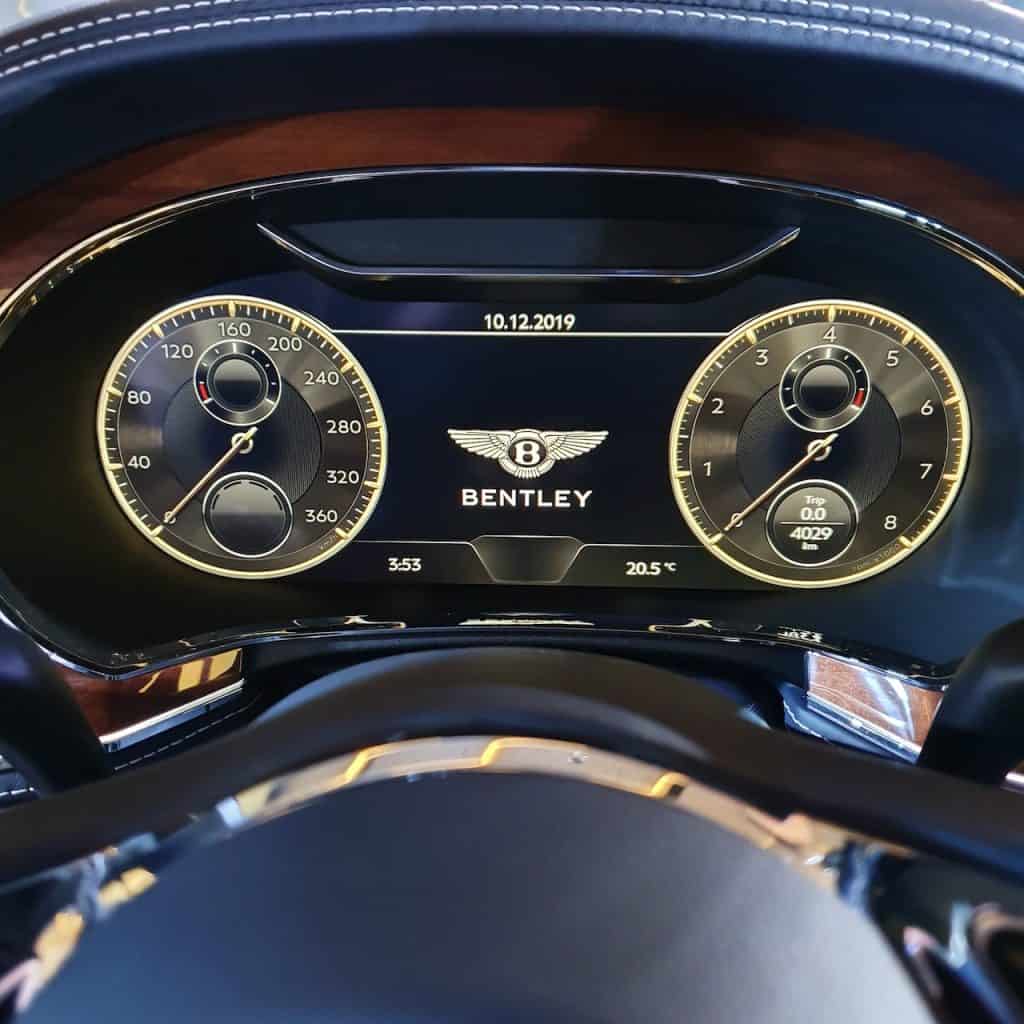SINGAPORE – The way Wayne Bruce sees it, you get two cars in one through the all-new, third-generation Bentley Flying Spur. “It has the duality of drive or be driven,” Bruce says to WHEELS.PH.
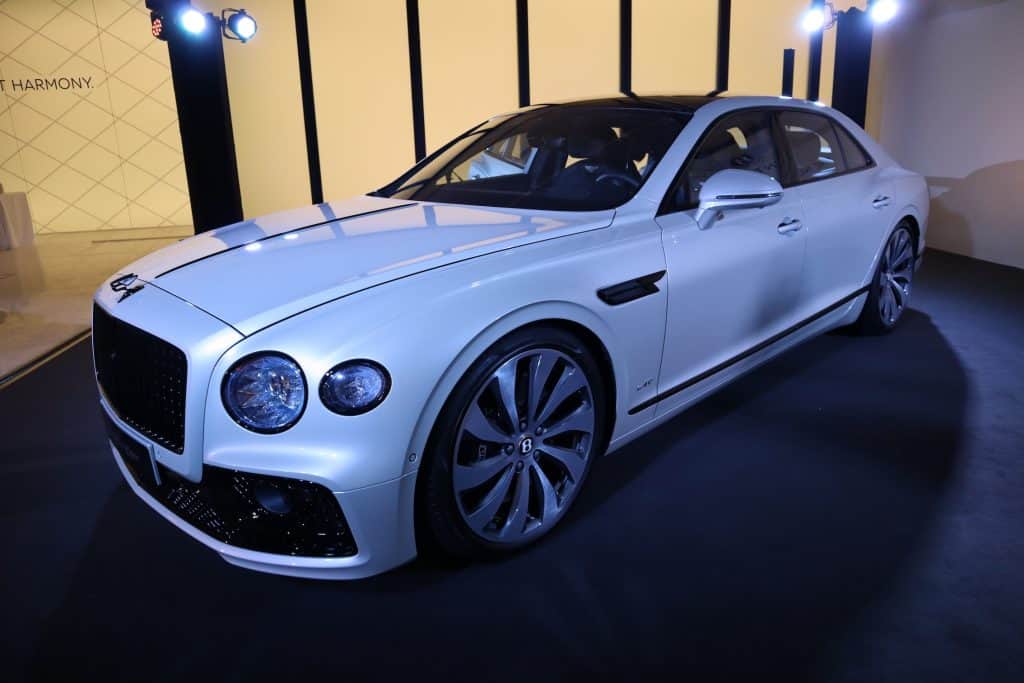
“Two cars for the price of one. It’s a bargain,” he adds with a grin.
The Bentley Flying Spur is presented here at the Bentley offices within the Wearnes Automotive complex. Bentley Singapore is actually the company’s oldest location outside of the UK, with Wearnes being a partner of the brand since 1931.
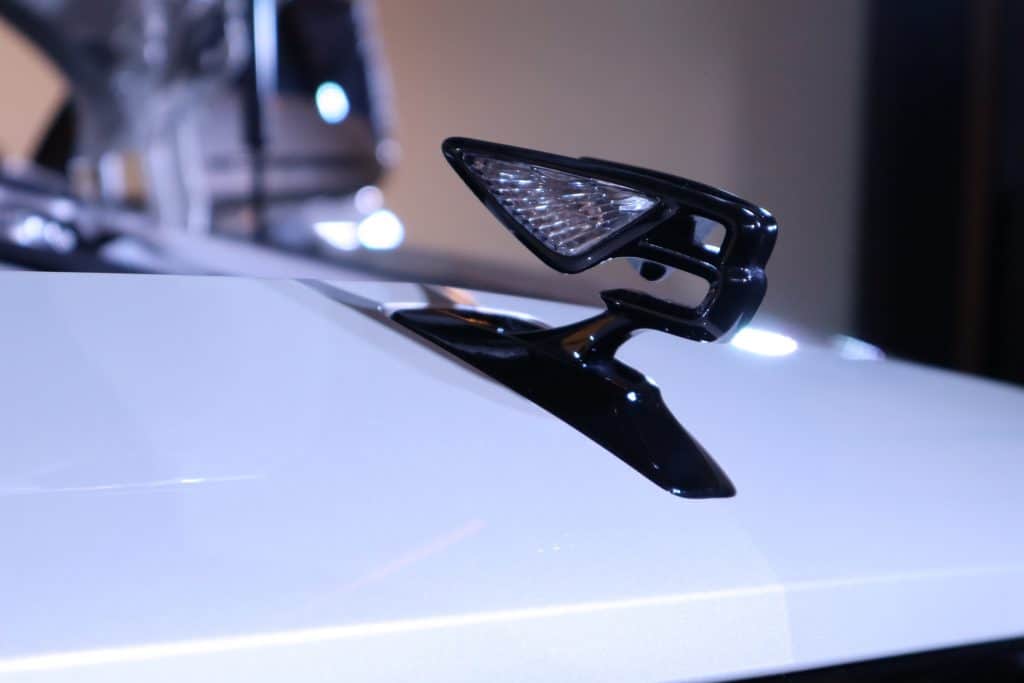
First off, that’s really his name: Wayne Bruce (he gamely shares that UK media call him “Man Bat”). The communications director of Bentley Motors is here for the regional unveiling of the latest iteration of its luxury four-door grand tourer, and he’s understandably enthusiastic about the vehicle. In a release, the Crewe, England-headquartered automaker had declared that this new Flying Spur “owes only its name to its predecessor,” and is a vastly different product (with about 2,000 changes, in fact).
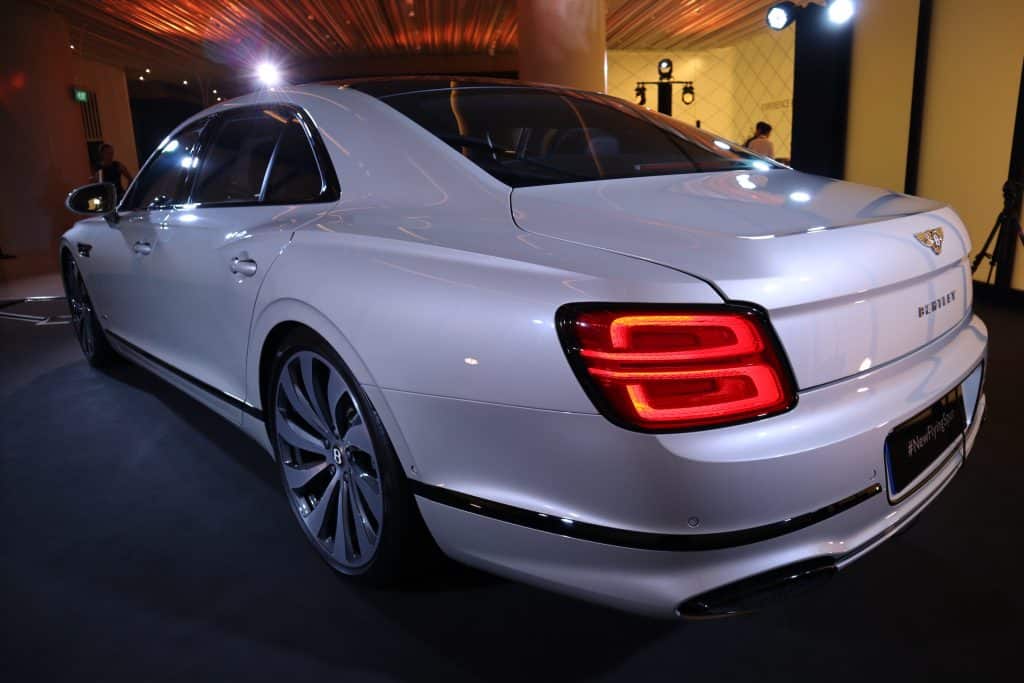
The duality that Bruce speaks of is also expressed in “sports sedan agility and modern limousine refinement.”
It starts with a new platform which allowed Bentley engineers to extended the Flying Spur wheel base by a hefty 130 millimeters – moving the axle forward. This change allowed an increase in “Prestige Mass,” or what designers call the “visible area of sheet metal between the front-door shutline and the wheel – bestowing the new model with its unique, more dynamic character.”
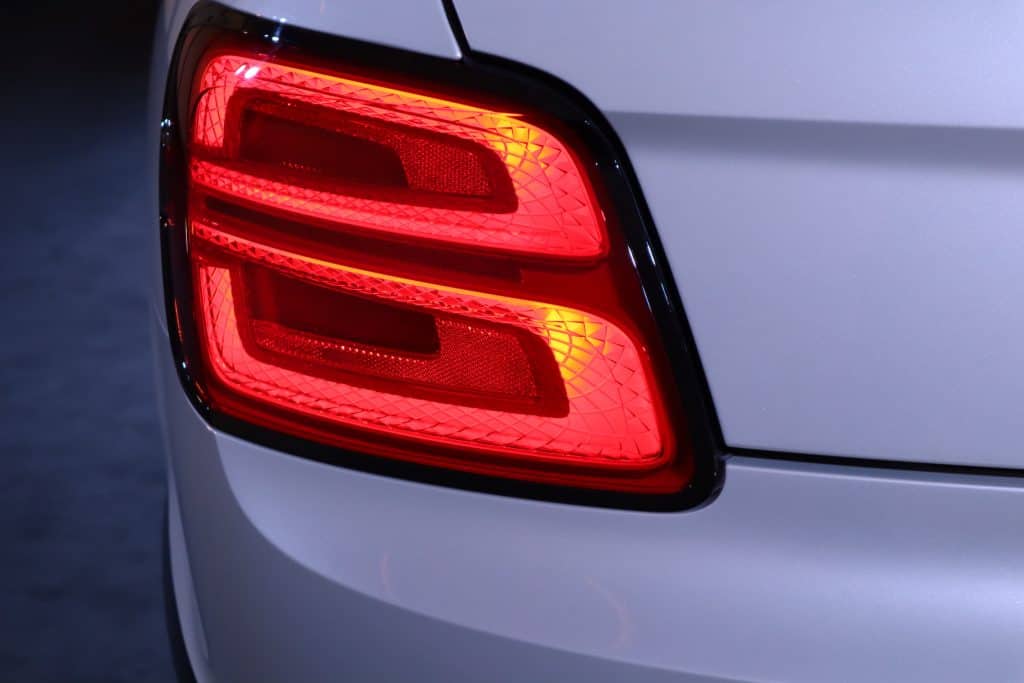
Bruce further reports that the new Flying Spur is 38 kilos lighter than the outgoing model because of all-aluminum exterior panels. In fact, the “rear body side panel is the largest superformed aluminum panel in any car you can buy today.” Bentley employs its own method to create the panels – involving heating sheets to more than 500 degrees Centigrade before each part is cut to shape by a high-power laser.
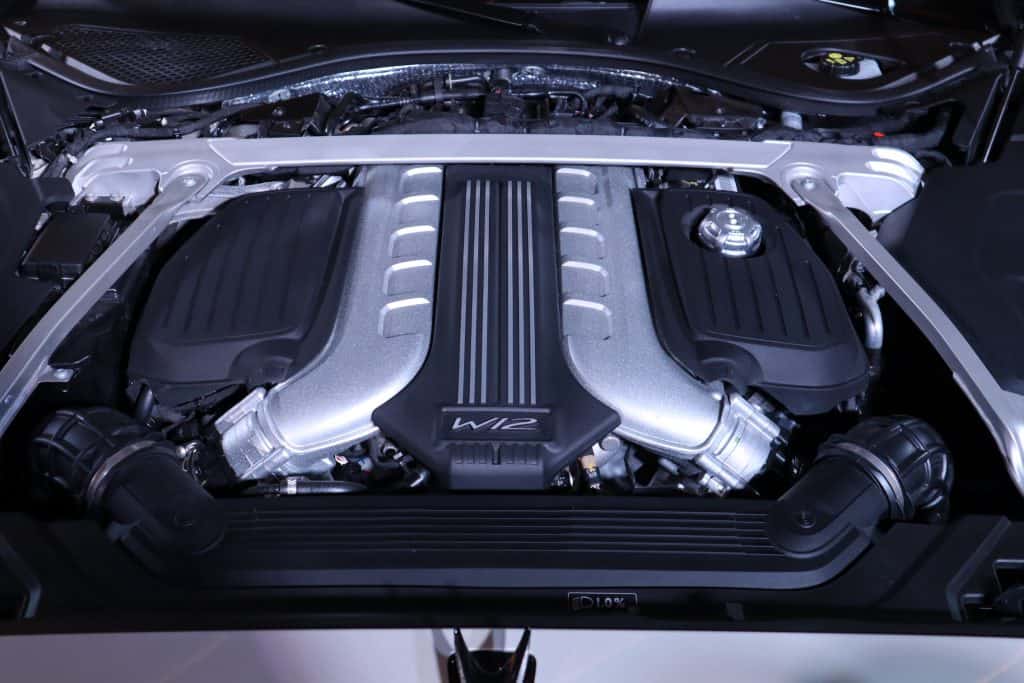
Under the hood rumbles Bentley’s famous W12 engine – or, rather, the newest iteration of the hand-built power plant. Even if the name is the same, Bruce maintains this is a “completely new design” which is 15 percent more efficient than its forebear. This is made possible as the system shuts off six cylinders when not needed.
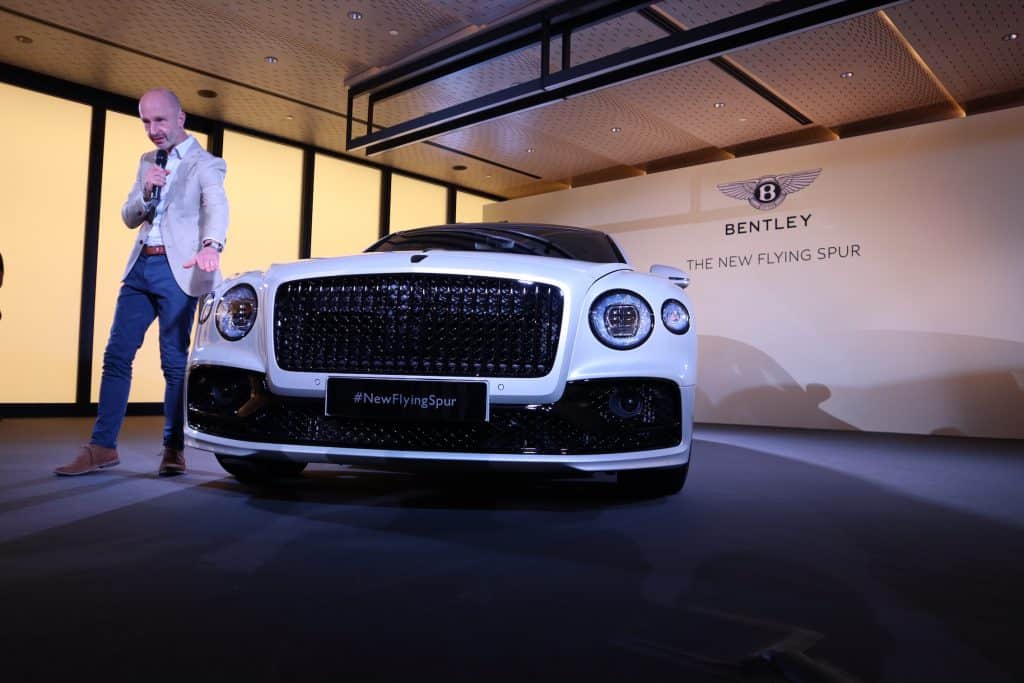
The 6.0-liter twin-turbocharged W12 churns out 635ps at 6,000rpm and 900Nm from 1,350 to 4,500rpm – good for, well, spurring the Flying Spur to 100kph in 3.8 seconds and up to an electronically governed top rate of 333kph. Bruce guarantees the windshield wipers will work at that speed, by the way.
“We think it’s the world’s fastest sedan,” he replies when asked by WHEELS.PH, although there wasn’t a design fiat to capture that flag. Rather, Bruce avers that 333kph is an important figure in Germany to accepted in the super sedan class. With that, he comments, “I’ve been told by engineers it could go faster.”
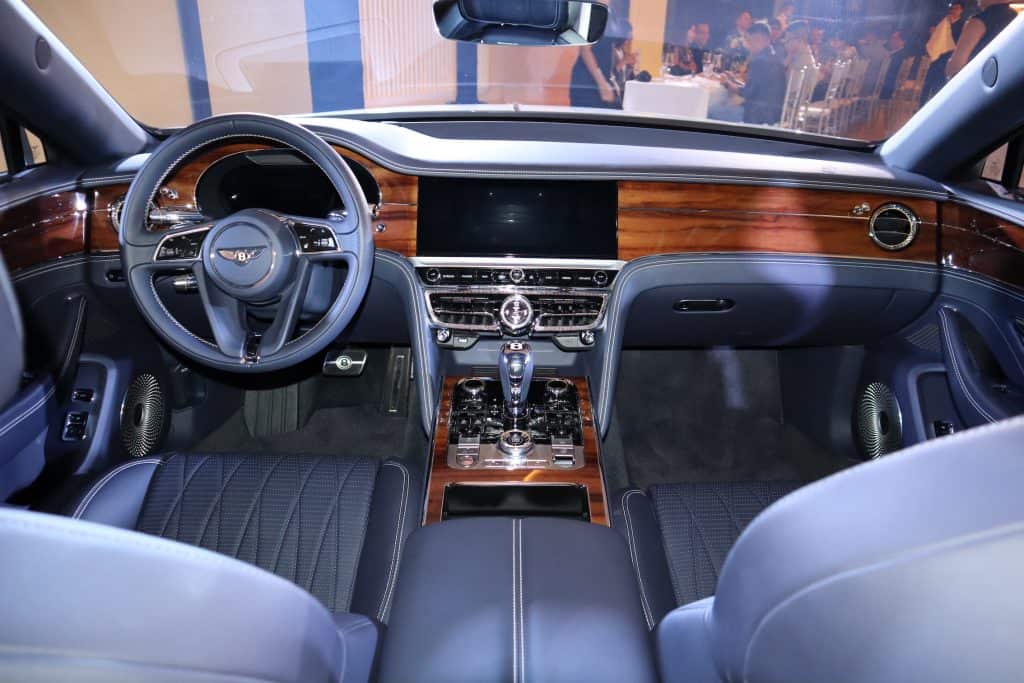
The all-wheel drive Flying Spur will now also have, for the first time, all-wheel steering. So despite stretching 5.18 meters, the vehicle will display a tighter turning circle in low speed as the rear wheels will move opposite the front pair. Meanwhile, when at high speed the rears will turn in the same direction for “increased nimbleness.”
How did buyer expectations shape this new Flying Spur? “There are certain characteristics that our customers and our future customers want and demand from a Bentley because it’s a Bentley. There’s the handcrafted-ness; there’s the beautiful, elegant, understated design. There’s power you just take for granted – effortless power when you want it. This is car is not loud like a McLaren, for example.
“Increasingly, because Bentley owners use their cars as a daily driver, they expect all the modern technology accessible to them, which is why one of the big differences between this car and its predecessor is driver assist systems (it has around a dozen),” states Bruce.
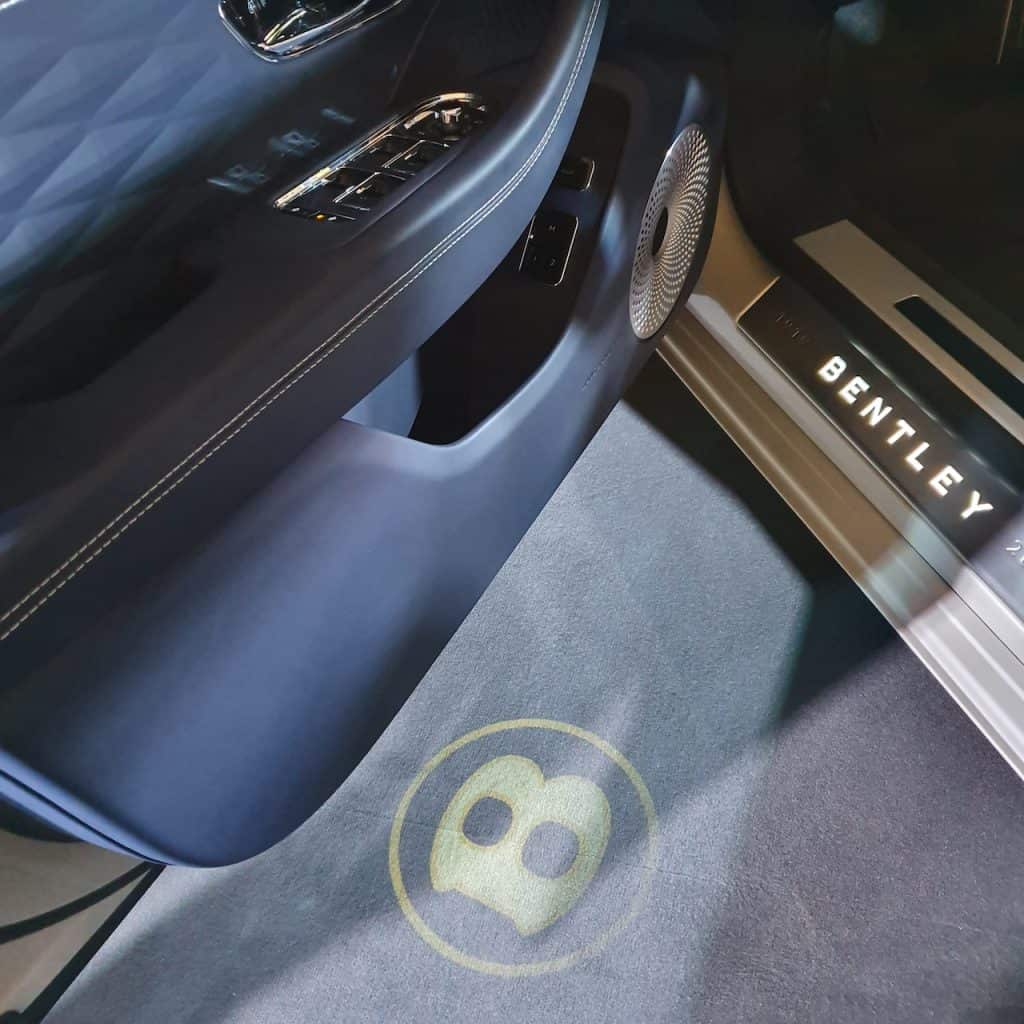
At the front, the Flying Spur has an unmistakable presence, and is unmistakably Bentley – aided by muscular lines “that sweep over the haunches and the full length of the car.” For the first time in the model, the Flying B hood ornament (which has been redesigned for the company’s centenary) is retractable. It is electronically deployed and illuminated – linked to the welcome lighting sequence and keyless entry system as the driver approaches the vehicle.
The grille bears a gloss-black finish with chrome surround and vertical vanes calling to mind the 1957 Bentley S1 Continental Flying Spur. Customers may choose either black or bright chrome in the lower grille.
Headlamps bear LED matrix lighting as standard. This allows the driver “to operate on main beam all the time, automatically cutting a hole in the beam around oncoming vehicles to avoid dazzling other drivers. Matrix headlights feature unique, cut-crystal effect detailing. A chrome sleeve was added behind the cut element, making them sparkle even when not lit.”
Again, owing to its vaunted “duality,” the Flying Spur promises that “passengers in the rear enjoy exactly the same standard and quality of experience as those in the front.” A multi-functional five-inch color touchscreen remote control is mounted in the rear atop the center console. It “integrates seamlessly into the console but can be removed at the touch of a button for remote use,” allowing backseat passengers control over many of the car’s features such as the window blinds, climate control, and rear seat massage function.
When unoccupied, the front seat can even be moved forward by the rear passenger for more space. Key vehicle data can also be pulled up, and control to the audio system, mood lighting, and key sections of the navigation system is possible as well.
Customers will have their druthers from among three audio systems. The standard has 10 speakers and 650 watts of sound; a Bang & Olufsen steps it up with 16 speakers (with illuminated grilles) and 1,500 watts of sound; then the Naim for Bentley delivers 18 speakers (with two active bass transducers) and 2,200 watts of sound – in addition to a 21-channel amplifier, eight DSP sound modes, and illuminated speaker grilles.
All-new seats offer heating and cooling, active bolsters, and top tilt to support the upper back. The rear seats serve up 14-way adjustment and five massaging modes, among other accoutrements. Rear occupants also get entertainment tablets situated on the back of the front seats – giving them access to the Bentley Multimedia System. The devices can access the Google Play store and feature their own internal memory.
Of course, vehicles at this price point offer bespoke options. “We’ve also tried to broaden the breadth of how the car looks,” Bruce says. There are 17 colors in the standard exterior palette. If that’s not enough, an extended palette offers an additional 40-something hues. There’s a so-called black-line trim, various color splits and even different-colored hides.
And if the plethora of choices prove overwhelming, Bentley comes to the rescue by offering “co-creation” through retailers. “You can meet with a Bentley designer to sit with you,” he explains. This designer will get a sense of what the customer wants through his or her lifestyle and choices. He might ask for the kind of hotel the customer goes for or even preferred food. “They’ll come up with what they think should be your Flying Spur.”
For now, the Flying Spur will get the storied W12, but talks are rife about it getting a V8 sometime in the future. When asked about it, Bruce replies with a smile, “You could guess that a V8 could be in or plans; we haven’t said when. You could also guess that we’re working on a plug-in hybrid.”
What is sure is that every Bentley model (including the Flying Spur, of course) by 2023 will have an electrified variant, and that a pure EV will be released in 2025.
There’s no hard stop as of yet for the beloved W12 – and the internal combustion engine, for that matter – but Bruce did offer up valuable insight: “We can see the world is changing. We don’t want a luxury car to go the way of the fur coat.”
Bentley Manila shared with WHEELS.PH that we can expect the all-new Flying Spur in our market “around March” next year. Reservations are being accepted; in fact, there are already people on the list.


